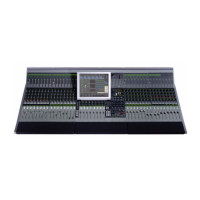Euphonix Max Air Mixing Console Operation Manual
17
Chapter 1: Introduction
Congratulations on your purchase of Max Air, a compact high-performance digital
mixing console intended for on-air broadcast and live applications. Max Air has been
designed to satisfy broadcast audio professionals who demand the highest quality stan-
dards. Max Air is the perfect choice for serious broadcast audio production facilities that
require a powerful digital mixing system with an easy-to-use interface.
1.1 How to Use This Manual
Euphonix has dedicated substantial time and resources to the Max Air documentation.
We recognize the diverse range of experience among our customers and have written
and organized the manual to be accessible to everyone. Of course it is more fun to use
Max Air than read about it but we assure you that your time reading this manual will be
well spent.
Manual Structure
We recommend that everyone read this introduction in its entirety. The manual contains
the following chapters:
• Chapter 3: Quickstart to Common Tasks: Provides the fastest way to begin us-
ing Max Air’s basic features. Since this chapter depends on using the Touch-
screen, read page 45–48 to acquire introductory knowledge before beginning.
• Chapter 4: Touchscreen: Since Max Air uses Touchscreen software to imple-
ment its ground-breaking user-interface, it is important to get acquainted with
this new technology. We recommend reading this chapter in its entirety.
• Chapter 5: Channels and Strips: Discusses the physical area of the console used
to control channels and the channel processing functions.
• Chapter 6: Busses: Discusses Max Air’s bus system consisting of 24 Main bus-
ses, 24 Group busses, 16 Aux busses, and a stereo solo bus.
• Chapter 7: Center Section: Discusses Max Air’s center section including the
Super Channel, monitors, talkback/slate, oscillator, solo, Soft Knobs, faders,
keypad, global functions, and Custom keys.
• Chapter 8: Control Groups and Multi Format Masters: Discusses how to use
Control Groups and Multi Format Masters and the difference between them.
• Chapter 9: Layouts and Snapshots: Discusses how to store/recall channel-to-
strip mappings (layouts) to the console and how to store/recall channel func-
tions (snapshots).
• Chapter 10: Event System: Discusses how to use the event system to program
Max Air.

